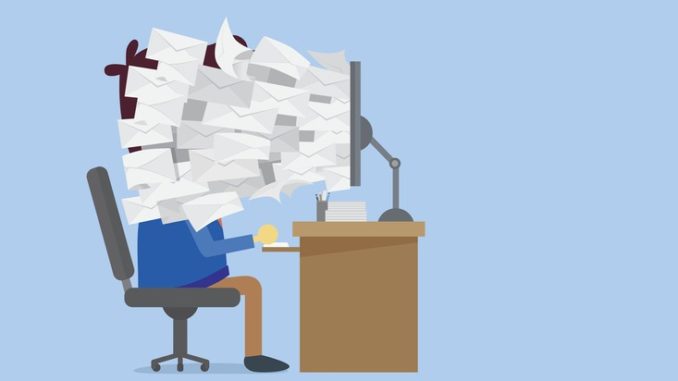
You and everyone else on the planet with an email account is suffering from overload, and your emails to your team are housed within their overloads – so, how can you make sure that your emails are opened, read, and understood?
CREDIT: This is an edited version of an article that originally appeared on About Leaders
What’s your objective?
Just sending out emails to ‘keep in touch’ is not a good thing. Your team members will tire of them, come to ignore them, and just move on with their tasks. If you want to have ‘keep in touch’ communications, in order to build camaraderie and strong relationships, use video conferencing; it’s far more effective for this purpose.
Have only one objective for each email you send – and be certain that it is in the subject line. Also, make it clear you need a response, even if it’s just acknowledgement of the project. If you don’t want recipients to take some action, or respond, the conversation belongs somewhere else.
Chad Grisham, HR director for Studicus, puts it this way, “We have a large team of writers and editors, all of whom are working on unique customer orders. Our department depends on them to communicate with us via text or email if they have specific questions. I reserve emails for big things – new policies, new tools, etc. My team knows that, when an email arrives from me, it’s important.”
Brevity is golden
No walls of text, please. People don’t want to take the time to read a long, involved email; if you must go over 300 words or so, provide a link or an attachment.
Your emails should contain only the most important information that you need to impart, so stick to only one subject, drive home its importance, and add those links and attachments for the details.
The subject line – stress the topic and importance
People decide to open emails based upon the sender and the subject line. Your subject line should tell your team members what the email is about. Stick to the topic of the message; they will then understand what the email is about and the subject line will be the way in which messages back and forth can be found at a later date.
If your subject line is something like, ‘Things we need to remember’, then no one will remember what that was about when they try to retrieve it. On the other hand, if your email says something like, ‘Important deadlines as of June 27th’, there is no mistaking what the subject is.
Every word counts
There is no need to waste words or a reader’s time with pleasantries in emails; instead, open the email body with a type of thesis statement – maybe 20 words or so – stating exactly what the message is about; then get right to the point with instructions and then a call-to-action.
Make it snackable
Your recipients are in a hurry and, as a result of our digital world, quite impatient. They prefer to skim material rather than read paragraphs of content. Use visuals, bullet points and, as mentioned earlier, links or attachments for further details.
Be clear and simple in style
You are not writing an academic paper and you are not preparing a report for shareholders. You are writing to your team and you should have a personal relationship with them. So, write like you are writing to a friend. Be as casual as possible and use simple vocabulary. No-one wants to struggle with the meaning of words or terms.
Don’t use your smartphone
If you try to compose an email via your smartphone you will have a hard time revising and editing it, something you will probably want to do. Use a tablet or computer instead.
Consider when email is not appropriate
There are times when a call or in-person conversation is just better, especially when there is a need for lots of give and take, and lots of detail to iron out.
Skip the emails and use other conferencing tools that will allow immediate input and responses from multiple participants. Decisions that are made, and issues that are resolved, can then be reduced to writing and set out in an email.
Emails can also be pretty impersonal so, when you want to congratulate and reward your team members for a job well done, an email is probably not the best communication method; setting up individual ‘phone calls or video conferencing personalise these types of communications.
These eight tips should improve your use of email as a communication tool. Remember that focusing on one message at a time, using email sparingly, crafting subject lines that signify importance and keeping the message itself short and to the point will help to ensure that your emails get the attention they deserve.
Don’t forget to follow Dealer Support on Facebook and Twitter!

Be the first to comment